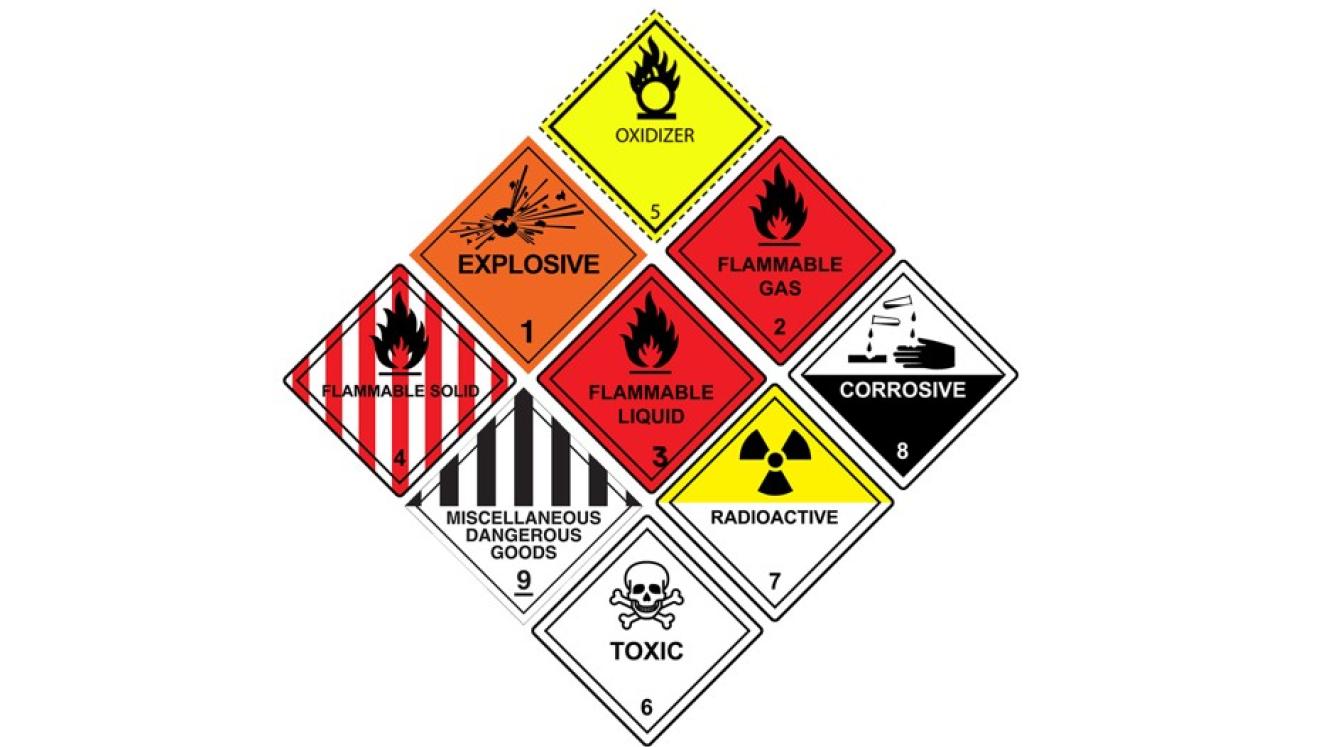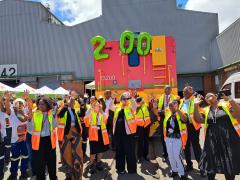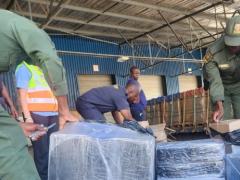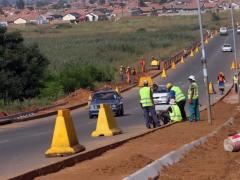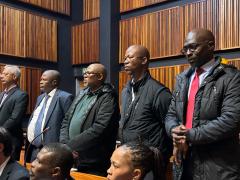Congestion at the Copperbelt transit border of Groblersbrug between South Africa and Botswana continues to hold back supply chain on the N11 north of Lephalale (October), forcing long-haul transporters to head to Skilpadshek down south on the N4.
This detour adds at least 300 kilometres to the journey, a cost implication for some Congo carriers who claim that profit margins are already compromised by road tolls in Zambia, ineffective road networks, costly crossings and other public-sector challenges.
“At least it now only takes two days to get through Groblersbrug,” said Mike Fitzmaurice, chief executive of the Transit Assistance Bureau.
“Which is ridiculous because it’s a transit border. It shouldn’t take more than a couple of hours to get through the border.”
At least one carrier of dangerous cargo (DG) has acceded to the request by South African border authorities to use other DG crossings – Skilpadshek and Beitbridge on the North-South Corridor (NSC) way through Zimbabwe.
Fitzmaurice said one of the Hachem carriers said he would rather use Skilpadshek than sit in the queue on N11, which on the morning of October 1 was about two kilometres long.
Another Hazchem carrier, also taking fuel to the Democratic Republic of the Congo, has said his profit margins are already too thin to absorb the longer way through Skilpadshek, which then involves re-joining the Copperbelt route through Botswana north of Lobatsi and Gaberone.
As for the NSC through Zim, hauliers continue to spurn what should be the fastest and most preferred route to the Copperbelt, at least kilometres shorter than the current Botswana bypass via Groblersbrug.
Fitzmaurice said although Zimborders’ concession fees at Beitbridge is expensive at US$213 one way, Hazchem carriers would probably pay it, if it weren’t for all the other issues along the way.
These include sporadic smuggling checks between Beitbridge and Chirundu, often used by police to exploit transports, and poor road infrastructure.
Zimbabwe is apparently trying to stimulate interest in the NSC by suspending in-transit charges levied on already hard-done by transporters.
But especially DG bulkers aren’t biting, because of “dipping” upon exit at Chirundu, done to see whether fuel hasn’t perhaps been offloaded midway through Zim because of rampant fuel smuggling.
This is despite the fact that dipping, a time-consuming and old-fashioned way to counter fuel smuggling, isn’t necessary if more tech-savvy means are used.
Real-time GPS tracking of tankers have long since been touted as reason enough to cancel out dipping, but fuel hauliers continue to have Zim-size reasons to head through Botswana and Zambia.
“Zimbabwe should be the preferred way for transporters, but aren’t because of all the issues transporters face. Had it not been for the corruption, poor roads and related delays, tanker operators would gladly pay the Zimborders fees.”
Meanwhile the Border Management Authority (BMA) and the Cross-Border Road Transport Authority (C-BRTA) apparently claim credit for helping to reduce waiting time at Groblersbrug from four days to two.
It’s a bit like the ribbon-cutting ceremonies one see on social media when politicians somewhere in South Africa open a tap to a ululating crowd.
“They (the authorities) say they’re helping but there’s no sign of that on the ground,” Fitzmaurice said.
The BMA and C-BRTA have in the recent past said there’s not much they can do about the unprecedented increase of truck traffic through Gorblersbrug, apparently caused by a spike in demand for acid on the Copperbelt’s mines.
Both organisations have asked operators to consider using alternative borders.
